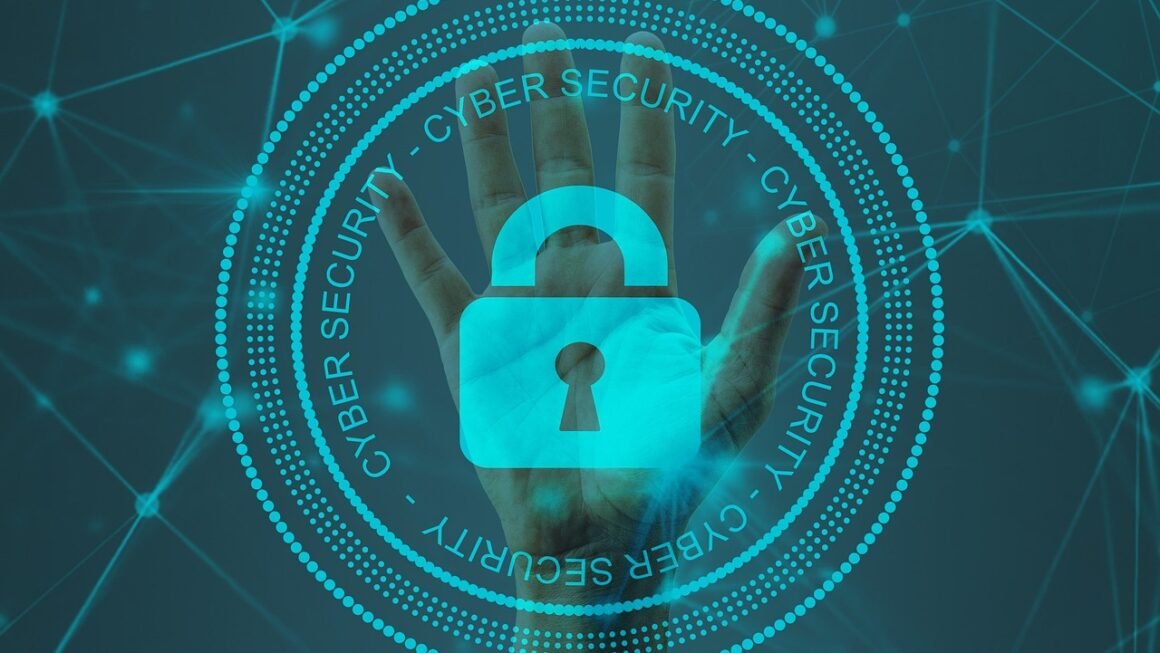In today’s interconnected world, cybersecurity is no longer just an IT concern; it’s a critical business imperative. A robust cybersecurity policy acts as the cornerstone of any organization’s defense against ever-evolving cyber threats. It’s not just about firewalls and antivirus software; it’s about establishing a comprehensive framework that outlines acceptable use, risk management strategies, incident response procedures, and ongoing training. Neglecting this vital area can lead to devastating consequences, including data breaches, financial losses, reputational damage, and legal liabilities. This blog post will delve into the essential components of a well-defined cybersecurity policy, providing actionable insights to help you protect your organization in the digital age.
Understanding the Importance of a Cybersecurity Policy
A well-defined cybersecurity policy serves as a roadmap for protecting your organization’s sensitive information and systems. It provides clear guidelines for employees, contractors, and other stakeholders, ensuring everyone understands their responsibilities in maintaining a secure environment.
Why is a Cybersecurity Policy Necessary?
- Reduces Risk: A policy helps identify and mitigate potential vulnerabilities, minimizing the likelihood of successful cyberattacks.
- Ensures Compliance: Many industries and regulations (like GDPR, HIPAA, PCI DSS) require specific cybersecurity measures. A policy helps demonstrate compliance.
- Protects Reputation: Preventing data breaches and security incidents safeguards your organization’s reputation and builds customer trust.
- Defines Responsibilities: Clearly assigns roles and responsibilities for security-related tasks, promoting accountability.
- Provides a Framework for Incident Response: Establishes procedures for responding to security incidents, minimizing damage and downtime.
- Example: Imagine a company without a clear bring-your-own-device (BYOD) policy. Employees might connect unsecured personal devices to the network, creating significant security risks. A comprehensive policy would address this by outlining security requirements for personal devices accessing company resources.
Key Elements of an Effective Policy
An effective cybersecurity policy should address the following key elements:
- Scope and Objectives: Define the purpose of the policy and who it applies to.
- Acceptable Use: Outline acceptable and unacceptable uses of company systems and data. This includes internet usage, email communication, and software installation.
- Access Control: Specify procedures for granting and managing access to sensitive data and systems.
- Data Security: Detail measures for protecting data at rest and in transit, including encryption and data loss prevention (DLP) strategies.
- Incident Response: Describe the process for reporting, investigating, and resolving security incidents.
- Compliance: Identify relevant industry regulations and legal requirements.
- Training and Awareness: Emphasize the importance of cybersecurity training and ongoing awareness programs.
- Policy Enforcement: Explain the consequences of violating the policy.
Developing a Comprehensive Cybersecurity Policy
Crafting an effective cybersecurity policy requires a thoughtful and collaborative approach. It’s crucial to involve stakeholders from various departments, including IT, legal, human resources, and senior management.
Steps to Policy Development
Practical Examples of Policy Components
- Password Policy: Require strong passwords (e.g., a minimum of 12 characters, including a mix of upper and lowercase letters, numbers, and symbols). Enforce password complexity and regular password changes. Implement multi-factor authentication (MFA) whenever possible.
- Email Security Policy: Provide guidelines for identifying phishing emails and avoiding malicious attachments. Implement email filtering and anti-spam solutions.
- Data Backup and Recovery Policy: Define procedures for backing up critical data and restoring it in the event of a disaster. Regularly test backup and recovery processes.
- Incident Reporting Policy: Establish a clear process for employees to report suspected security incidents. Encourage prompt reporting without fear of reprisal.
- Example: A company’s password policy might state: “All employees must use a strong password of at least 12 characters, including upper and lowercase letters, numbers, and symbols. Passwords must be changed every 90 days and cannot be reused. Multi-factor authentication is required for all email and VPN access.”
Implementing and Enforcing the Policy
Having a well-written cybersecurity policy is only half the battle. Effective implementation and enforcement are crucial to ensuring its success.
Implementation Strategies
- Communicate the Policy Clearly: Use various channels to communicate the policy, such as email, intranet postings, and in-person training sessions.
- Provide Training and Awareness Programs: Regularly conduct cybersecurity training for all employees, covering topics such as phishing awareness, password security, and data protection.
- Implement Technical Controls: Use technical controls such as firewalls, intrusion detection systems, and data loss prevention (DLP) tools to enforce the policy.
- Monitor Compliance: Regularly monitor compliance with the policy through audits, vulnerability scans, and penetration testing.
- Example: After implementing a new cybersecurity policy, a company could conduct a simulated phishing attack to test employees’ ability to identify and report suspicious emails. The results can be used to identify areas where additional training is needed.
Enforcement Mechanisms
- Disciplinary Actions: Clearly outline the consequences of violating the cybersecurity policy, ranging from warnings to termination of employment.
- Regular Audits: Conduct regular audits to ensure compliance with the policy.
- Performance Evaluations: Incorporate cybersecurity performance into employee performance evaluations.
- Legal Agreements: Include cybersecurity clauses in contracts with vendors and partners.
- Example: An employee who repeatedly violates the company’s cybersecurity policy by sharing sensitive data with unauthorized individuals might face disciplinary action, up to and including termination of employment.
Staying Up-to-Date with Evolving Threats
The cybersecurity landscape is constantly evolving, with new threats emerging every day. It’s crucial to stay informed about the latest trends and adapt your cybersecurity policy accordingly.
Monitoring and Adapting to New Threats
- Subscribe to Security Alerts: Subscribe to security alerts from reputable sources, such as the Cybersecurity and Infrastructure Security Agency (CISA) and industry-specific security organizations.
- Attend Security Conferences: Attend security conferences and workshops to learn about the latest threats and best practices.
- Conduct Regular Vulnerability Assessments: Regularly conduct vulnerability assessments and penetration testing to identify weaknesses in your systems.
- Update Your Policy Regularly: Review and update your cybersecurity policy at least annually, or more frequently if there are significant changes to your organization’s IT environment or threat landscape.
- Example: When a new zero-day vulnerability is discovered in a widely used software application, organizations should promptly assess their exposure, implement patches or workarounds, and update their cybersecurity policy to address the vulnerability.
The Importance of Continuous Improvement
- Feedback Mechanisms: Establish mechanisms for gathering feedback from employees and stakeholders on the effectiveness of the cybersecurity policy.
- Incident Analysis: Analyze security incidents to identify areas where the policy can be improved.
- Continuous Monitoring: Continuously monitor the effectiveness of the policy and make adjustments as needed.
- Example: Following a data breach, a company should conduct a thorough investigation to identify the root causes of the incident and implement corrective actions to prevent similar incidents from occurring in the future. This might involve updating the cybersecurity policy, improving employee training, or implementing additional security controls.
Conclusion
A robust cybersecurity policy is an essential element of any organization’s overall security posture. By understanding the importance of a policy, developing a comprehensive framework, implementing and enforcing it effectively, and staying up-to-date with evolving threats, you can significantly reduce your organization’s risk of falling victim to cyberattacks. Remember that cybersecurity is an ongoing process, not a one-time event. Continuously monitor, adapt, and improve your policy to ensure it remains effective in protecting your organization’s valuable assets.



